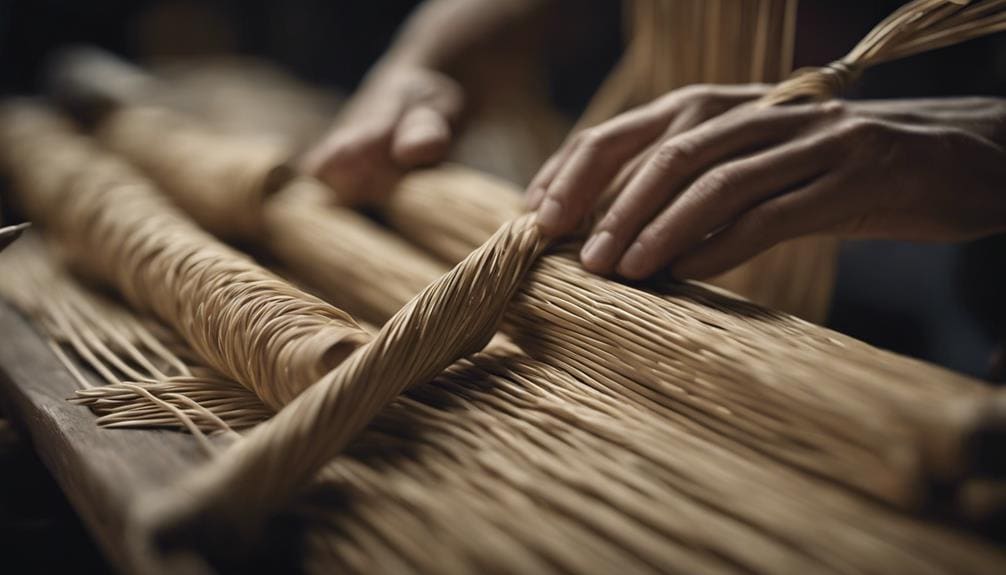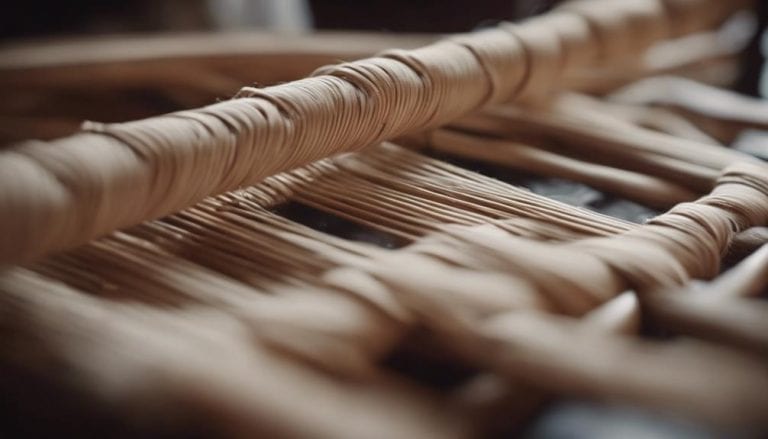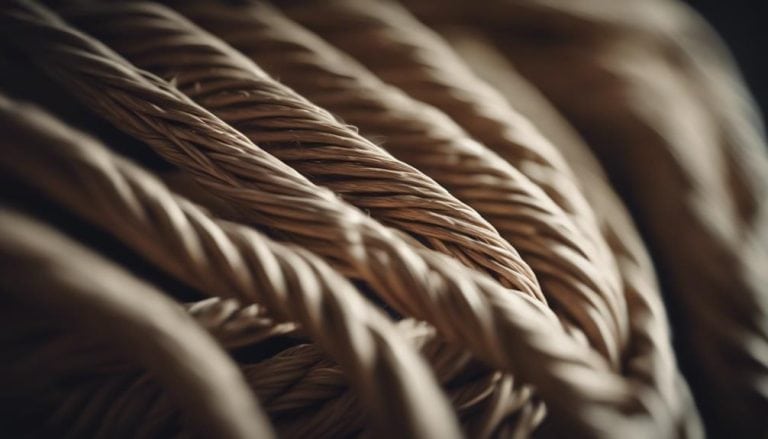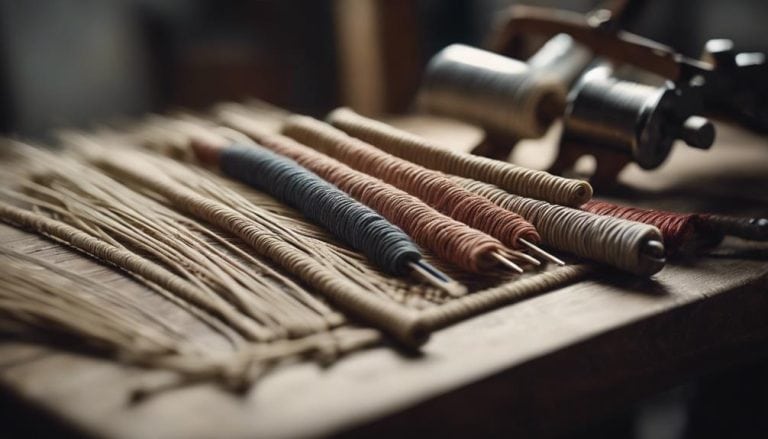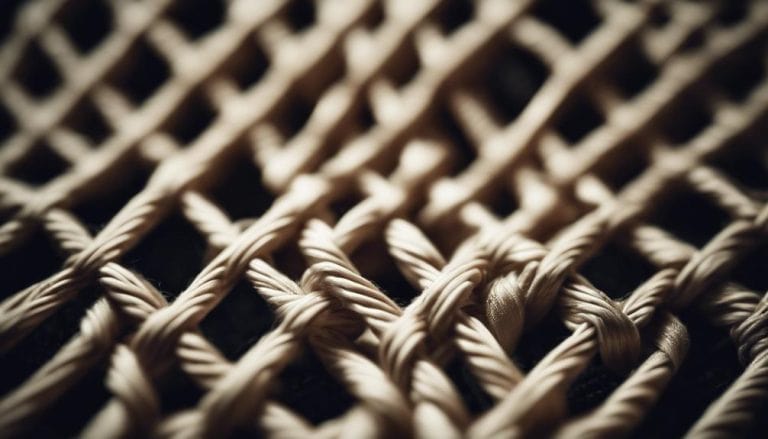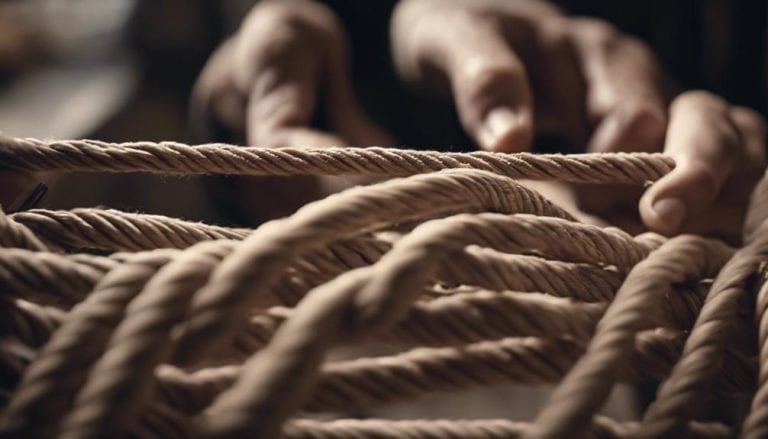Rush Reeds in Danish Cord Weaving
A world of texture and tradition unfolds as I untangle the intricate dance between rush reeds and Danish cord weaving. The blend of these materials creates a tapestry of craftsmanship that beckons exploration into the realm of seat weaving. The fusion of rush reeds and Danish cord holds secrets that whisper of skill and dedication, promising a journey where each weave tells a story waiting to be discovered.
In Danish cord weaving, rush reeds create traditional and durable seat surfaces. This technique involves weaving the rush reeds to form a strong and visually appealing pattern. It is a popular method for creating stylish and long-lasting furniture.
Key Takeaways
- Rush reeds enhance design aesthetics and structural integrity in Danish cord weaving.
- Proper tools and techniques are essential for weaving with rush reeds effectively.
- Maintenance of rush reed woven furniture ensures longevity and durability.
- Quality rush reeds and precise weaving techniques are crucial for a successful Danish cord weave.
Benefits of Integrating Rush Reeds
Integrating rush reeds into Danish cord weaving significantly enhances the visual and structural aspects of the design, providing a unique textural element that ensures durability and creative customization. The combination of rush reeds and Danish cord weaving adds aesthetic appeal and practical benefits.
The rush reeds introduce a rustic charm and natural feel to the woven seat, appealing to those who appreciate organic textures in their furniture. Beyond the visual allure, incorporating rush reeds strengthens the weaving structure, increasing its stability and longevity. This enhanced durability makes the seat resilient to everyday use, catering to practicality and style.
Moreover, the creative applications of rush reeds in Danish cord weaving allow for personalized customization, enabling individuals to tailor the design to their preferences. Whether adding a pop of color with dyed rush reeds or experimenting with different weaving patterns, the integration of rush reeds opens up a world of creative possibilities, elevating the overall aesthetic appeal of the finished piece.
Tools Required for Rush Reeds
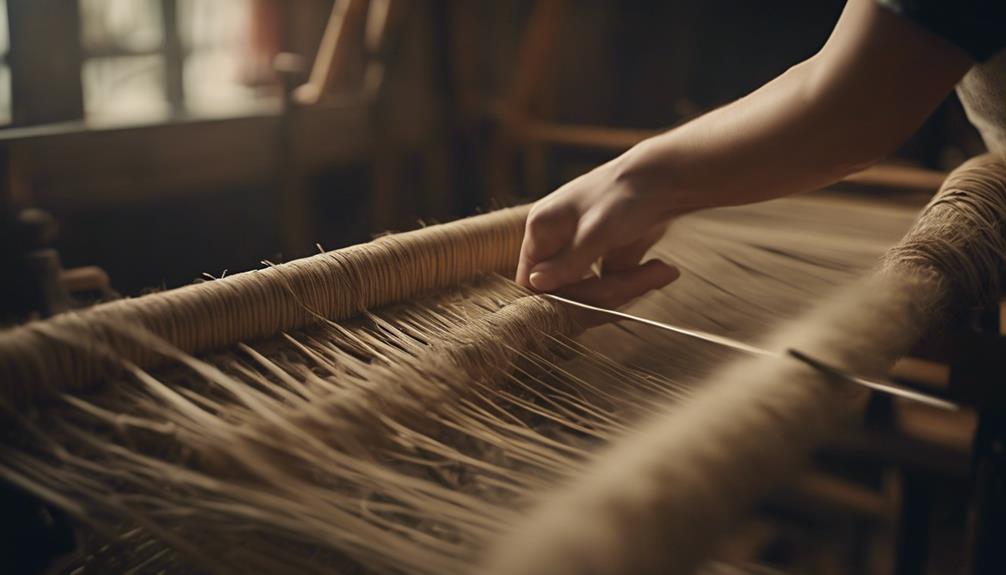
When embarking on Danish cord weaving with rush reeds, the essential tools required include an awl for puncturing holes in the frame. Proper tool selection is crucial to ensure a smooth weaving process. Tensioning tools play a vital role in maintaining the integrity of the rush reeds by ensuring they are woven tightly and securely.
Scissors are necessary for trimming excess rush reeds, contributing to a neat weaving pattern. Needle-nose pliers aid in gripping and manipulating rush reeds during intricate weaving stages. Additionally, clamps and vice grips prove useful for holding the rush reeds in place and maintaining tension and alignment throughout the weaving process.
| Tool | Function | Importance |
|---|---|---|
| Awl | Puncturing holes in the frame for weaving rush reeds | Essential |
| Tensioning tools | Ensuring rush reeds are woven tightly and securely | Crucial |
| Scissors | Trimming excess rush reeds to maintain a neat weaving pattern | Necessary |
Preparing Rush Reeds for Weaving
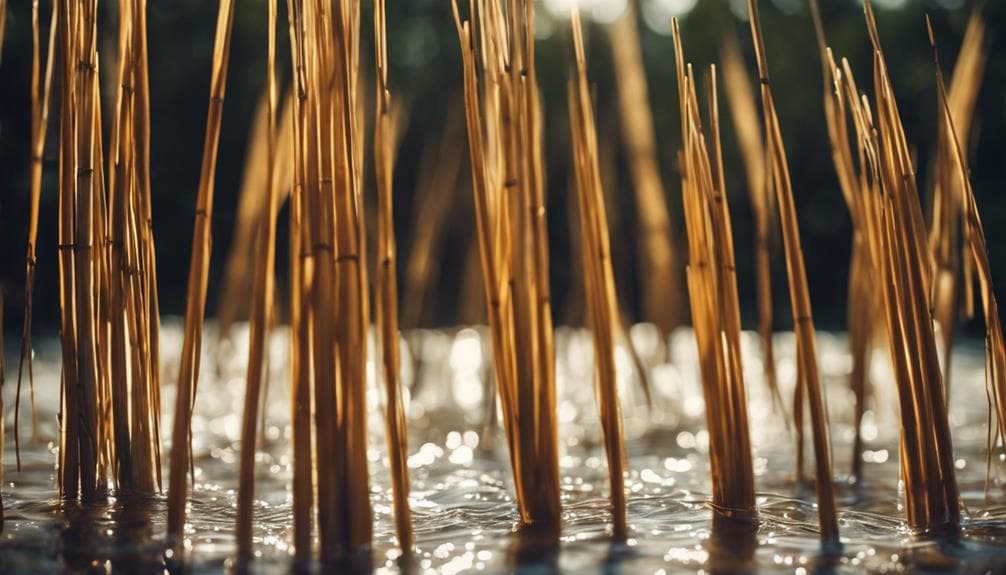
To ensure the rush reeds are properly prepared for Danish cord weaving, it is essential to follow a meticulous process that enhances their strength and flexibility in the final product. Rush reed sourcing plays a crucial role in sustainability and quality.
Typically made from natural materials like bulrushes or cattail leaves, these reeds need careful processing. The weaving process requires these reeds to be pliable, achieved by soaking them in water. Additionally, smoking the rush reeds enhances their color and increases their flexibility, making them easier to work with during weaving.
Properly prepared rush reeds are fundamental in creating a high-quality Danish cord weave that is durable and visually appealing. Understanding the intricacies of rush reed preparation is key to ensuring a successful weaving project. By meticulously following the steps to prepare rush reeds, we can guarantee a sturdy and beautiful Danish cord creation that will stand the test of time.
Techniques for Incorporating Rush Reeds

Incorporating rush reeds into Danish cord weaving requires a careful balance of technique and creativity to harmonize natural elements within the intricate weave. When incorporating rush reeds, there are several key techniques to consider:
- Creative Combinations: Experiment with different placements of rush reeds within the Danish cord weave to create visually striking combinations. You can introduce unique textures and depth to your design by strategically weaving rush reeds alongside the cord.
- Unique Textures: Utilize rush reeds to add a tactile element to your Danish cord weaving. The natural fibers of the rush reeds can contrast beautifully with the smoothness of the cord, providing an interesting textural dimension to the final piece.
- Visual Impact: Incorporating rush reeds allows you to enhance the visual impact of your weaving. By playing with the placement and density of the rush reeds, you can create eye-catching patterns that draw the viewer’s attention.
- Customized Patterns: Explore the possibilities of creating customized patterns by interspersing rush reeds throughout the Danish cord weave. This technique enables you to craft unique designs that reflect your style and artistic vision.
Maintenance and Care Tips

Regular maintenance and careful attention are essential for preserving the quality and longevity of Danish cord weaving. Regular dusting and occasional vacuuming are crucial to prevent dirt buildup and maintain the beauty of Danish cord. Direct sunlight exposure should be avoided to prevent fading of the material.
In case of spills or stains, gently spot clean with a mild soap solution and damp cloth, then air dry completely. Inspecting the weaving for wear or loose strands is important, and addressing them promptly to prevent further damage. A furniture polish or conditioning treatment designed for Danish cord can help keep it supple and prevent drying.
When it comes to repair methods, addressing any issues promptly is key to maintaining the integrity of the weaving. Preservation tips include storing Danish cord furniture in a cool, dry place away from direct sunlight or heat sources. Restoration strategies may involve seeking professional help for intricate repairs or refurbishments. Careful maintenance ensures that Danish cord weaving remains beautiful and functional for years.
Design Inspiration With Rush Reeds
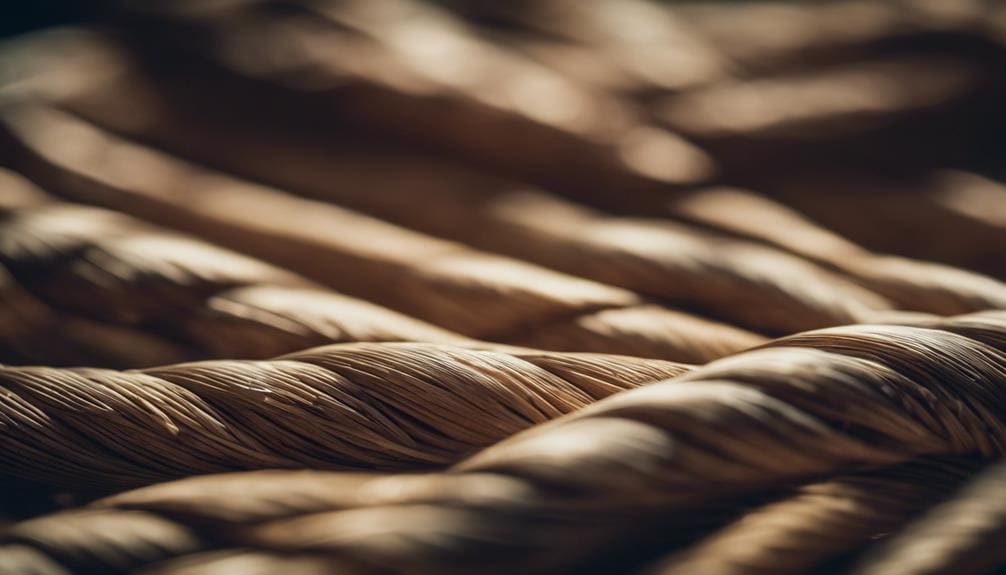
Utilizing rush reeds in Danish cord weaving infuses a distinct tactile and visual dimension, elevating the design aesthetics with its unique texture and traditional allure. Drawing inspiration from historical Danish furniture styles, incorporating rush reeds can lead to captivating designs.
Here are some ways rush reeds can inspire your Danish cord-weaving projects:
- Color Combinations: Experiment with different shades and tones of rush reeds to create visually striking patterns and contrasts within the weaving.
- Traditional Motifs: Incorporate traditional Danish motifs such as stripes or chevrons using rush reeds to pay homage to classic craftsmanship.
- Modern Twists: Combine rush reeds with contemporary design elements to give traditional Danish cord weaving techniques a modern twist.
- Geometric Patterns: Explore geometric shapes and patterns in your weaving design by skillfully integrating rush reeds to add depth and interest to the final piece.
Troubleshooting Common Rush Reeds Issues
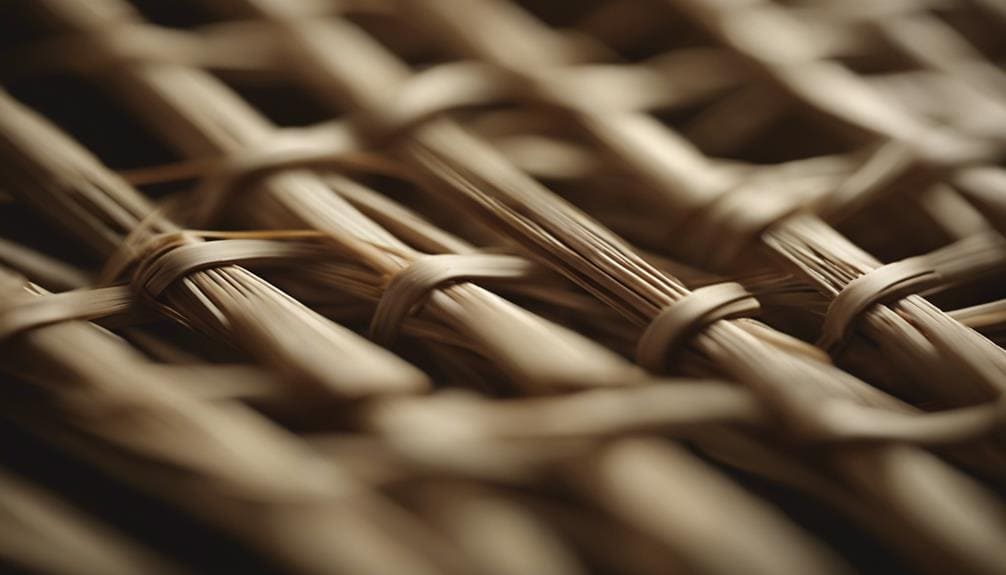
Drawing from the nuances of rush reeds in Danish cord weaving, addressing common issues encountered during the process is essential for achieving a seamless and high-quality outcome. Repairing breaks in rush reeds requires delicacy to avoid further damage. When encountering breaks, carefully trim the damaged area and splice in a new rush reed to maintain the integrity of the weave.
Tension control is paramount to prevent breaks and ensure a uniform appearance. Uneven tension can result in bulges or gaps in the rush reeds, disrupting the weave pattern. Soaking rush reeds in warm water before weaving can enhance their flexibility, reducing the risk of breakage.
Proper alignment and spacing of rush reeds are crucial in achieving a visually appealing weave without irregularities. Using consistent thickness and quality of rush reeds is fundamental for a smooth weaving process and a polished finish in Danish cord projects. By mastering tension control and adeptly repairing breaks, one can navigate common rush reed issues and elevate the quality of their weaving.
Frequently Asked Questions
Is Fiber Rush the Same as Danish Cord?
No, fiber rush is not the same as Danish cord. While fiber rush is a twisted brown kraft paper used in weaving techniques, the Danish cord is a finer, white material. Understanding these distinctions is crucial for weaving projects.
How Long Do You Soak Rush Before Weaving?
I soak rush reeds for about 10-15 minutes before weaving. It’s crucial to ensure they’re fully submerged for even flexibility. Test their readiness by gently bending them. Proper soaking is key for a smooth weave.
What Is the Difference Between Natural Rush and Fiber Rush?
Natural rush and fiber rush differ in material composition, with natural rush being sea grass and fiber rush crafted from paper. Weaving techniques vary due to their textures; natural rush requires more skill, while fiber rush is beginner-friendly.
What Is the Difference Between Rush and Cane Seating?
In comparing rush and cane seating, the weaving techniques stand out. Like Danish Cord weaving, Rush seating showcases intricate patterns using twisted paper cords, offering a modern touch. Cane seating, woven from rattan vines, ages elegantly.
Conclusion
In conclusion, using rush reeds in Danish cord weaving offers a refined and intricate texture to seat weaving projects. The challenges involved in working with rush reeds add to the craftsmanship required for creating beautifully woven seats. Embracing these challenges as opportunities for growth and skill development can lead to stunning and unique furniture pieces. Overall, incorporating rush reeds in weaving projects can elevate furniture’s aesthetic appeal and historical value while showcasing the weaver’s dedication and expertise.

